Spring has sprung, and all sorts of creatures are coming out of the woodwork…literally. 😆
One of those critters arrived as a patient earlier this month and inspired March’s Critter Corner. Meet the elusive and oh-so-charming Allegheny Woodrat!
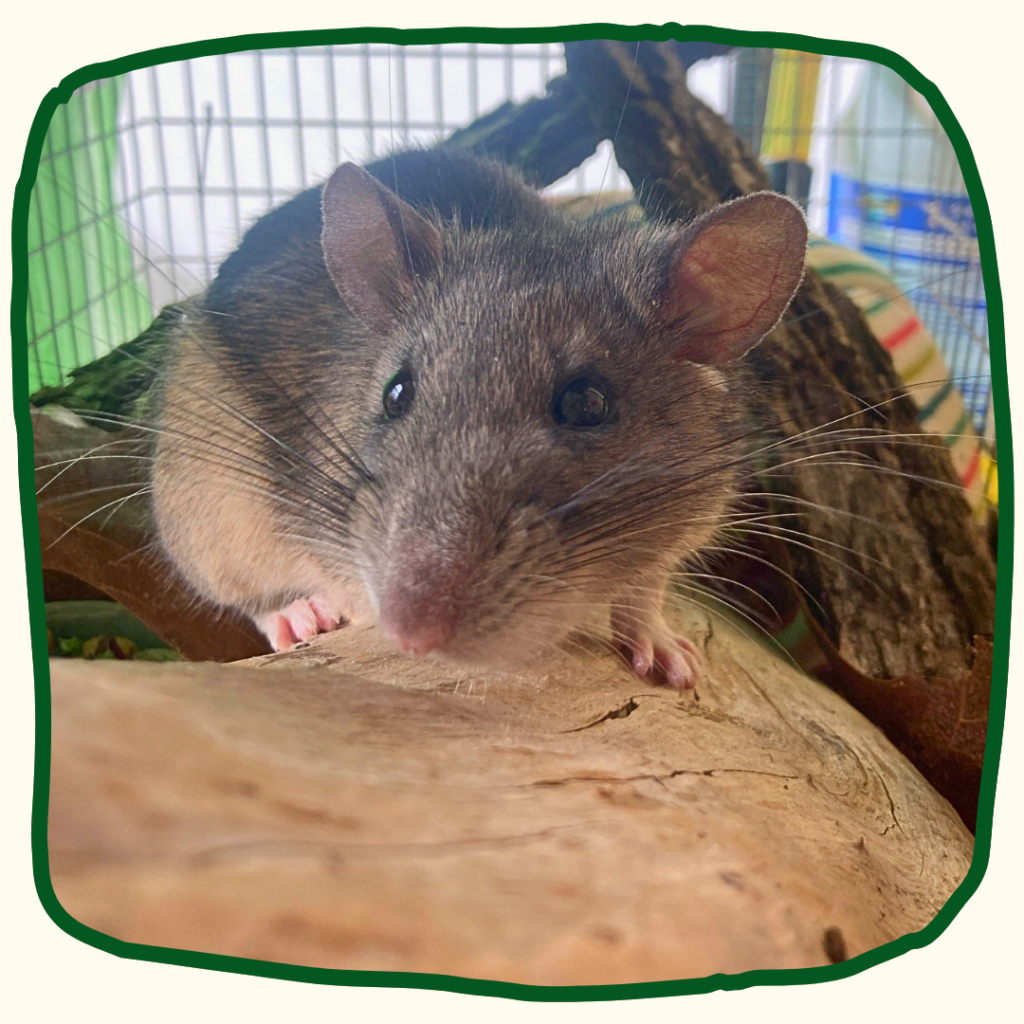
It began how most stories from the Sanctuary do: with a call to our wildlife hotline. ☎️ That call came earlier this month from a Nelson County resident who had caught a large rat in a humane trap. He had heard this particular rat inside his wall for a couple of months and had even seen her running around a few times! When he caught her, he noticed she was missing one of her front legs and wanted to bring her to a rehabilitation facility for evaluation. Our staff was confident this community member had caught a roof rat or Norway rat, which are both invasive.
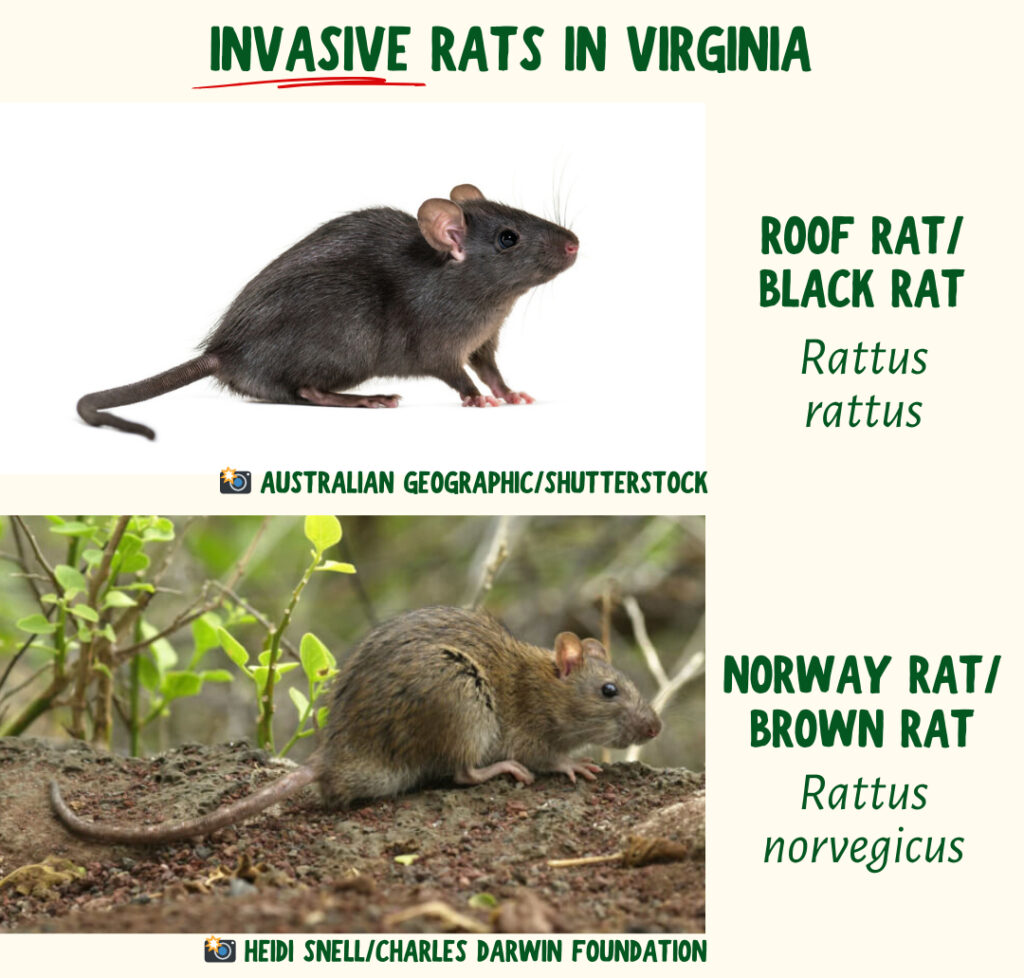
A Human History of Rats
Invasive rats are by far the norm when a caller reports they’ve found a rat in need of help. 🐀 These are the most common rat species that we humans encounter, after all! Roof rats and Norway rats, sometimes called black rats and brown rats, respectively, both originated on the other side of the world. Black rats likely originated in southeast Asia and India, whereas Norway rats potentially evolved in the plains of northern China and Mongolia. Since then, these rats have spread around the globe, accompanying humans as we have migrated and colonized over the centuries. However, it’s unclear when exactly in history rats became commensal with humans—meaning that rats benefit from close proximity to humans while humans typically neither benefit nor are harmed.
Okay, okay, you’re probably thinking, “But what about the Black Death?!” For decades, scientists believed that black rats were to blame for the 14th century’s nightmarish outbreak of the bubonic plague which killed roughly 1/3 of Europe’s population in just a few short years. However, fascinating recent research suggests that the plague likely spread between humans through lice and fleas, rather than being primarily driven by rats. Justice for rats! 😤
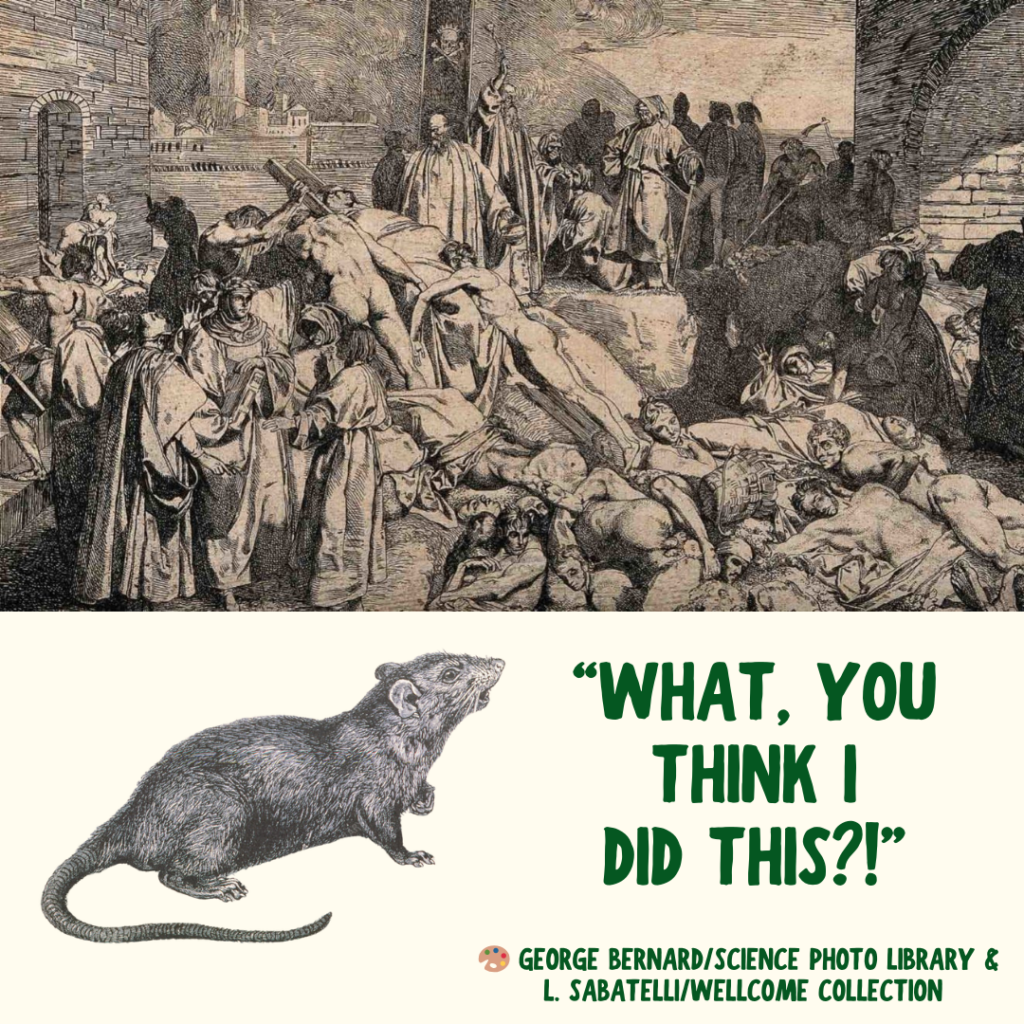
For better or for worse, though, roof and Norway rats are almost guaranteed to be your neighbors if you live near other humans. 😅 Because they are not native, it is unlawful to rehabilitate these species beyond providing humane euthanasia – and for good reason, due to the immense ecological damage invasive rats have caused over the centuries.
A Surprising New Patient
With all of this in mind, we were in for a delightful surprise when this community member sent photos of his three-legged rodent neighbor to our wildlife hotline. 🤩 Rather than looking at an invasive rat, we were gleefully looking at an adorable, native Allegheny Woodrat! We quickly admitted her as patient #25-016 for an evaluation, prompting our deep dive into this amazing species.
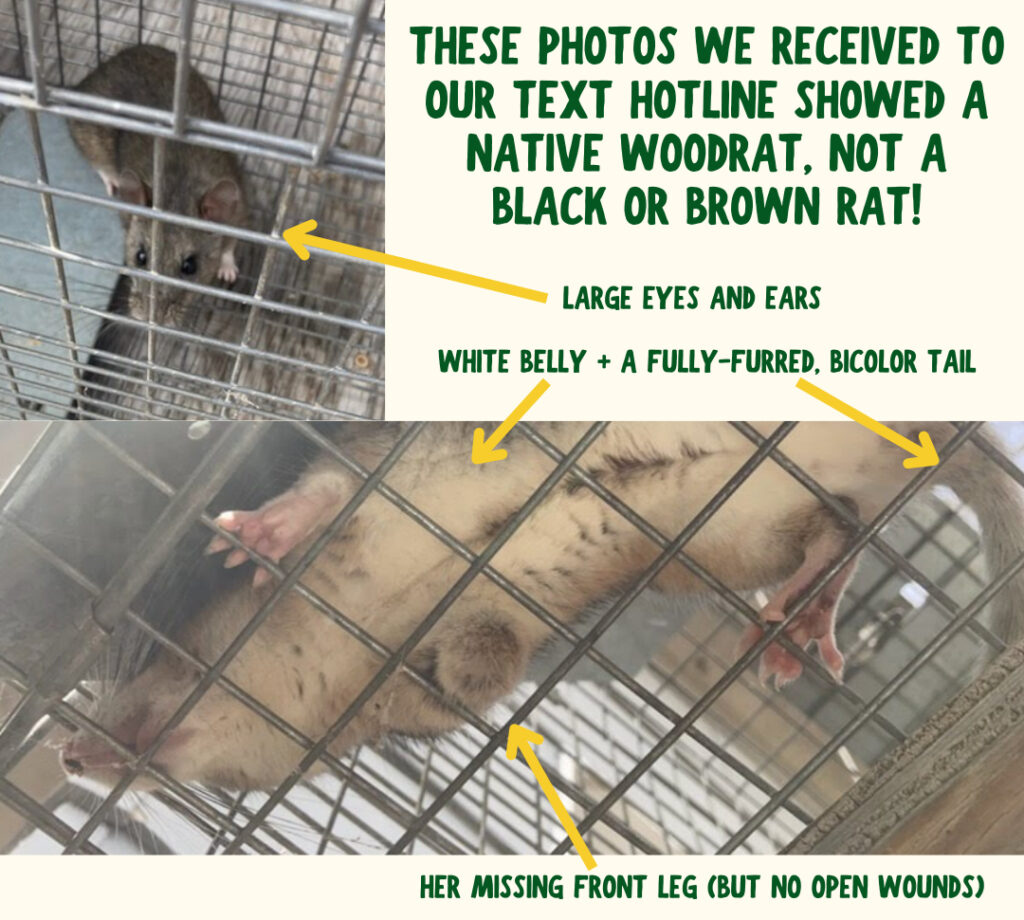
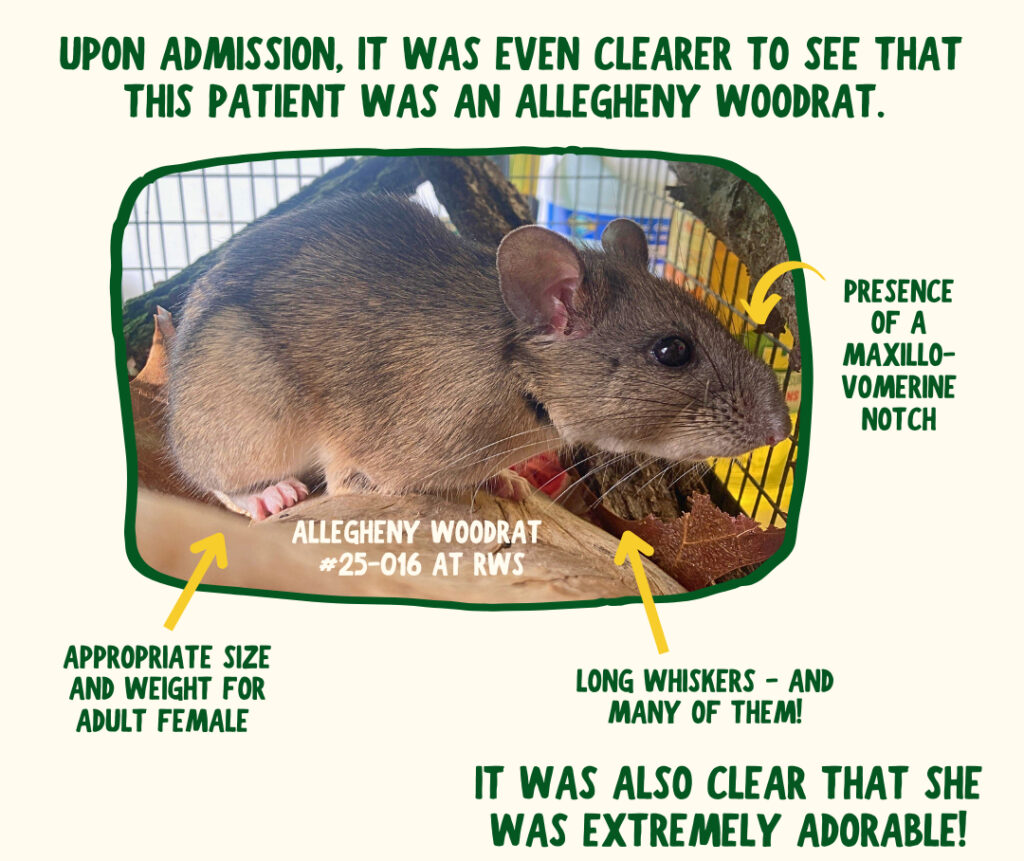
The Allegheny Woodrat (Neotoma magister) deserves none of the scorn heaped upon its invasive counterparts. In fact, they’re not even closely related to brown or black rats! Despite their name and ratlike look, native woodrats are much more closely related to native white-footed mice, voles, and muskrats. 🐹
Woodrats play an important role in forest ecosystems, and they need our help!
Allegheny Woodrat Natural History
As adorable members of the Neotoma (pack rat) genus, woodrats are excellent at treasure hunting. ✨They have a well-documented habit of collecting various items—including curiosities like wasp nests, bones, acorns, molted snakeskins, candy wrappers, shotgun shells and other shiny things. Woodrats have even been observed “trading” items. If they are carrying an item around and find something more appealing, they’ll drop the old and grab the new.
They’ll typically take their treasures back to their nests, where we can only assume they sit and stare at their collection of goodies saying “My precioussss” over and over. (Kidding – as far as we know, Gollum is not a native species. 😅)

Speaking of nests: woodrats are meticulous homemakers! 🏡 These critters construct middens, which are elaborate, spherical heaps of sticks, leaves, and their treasures. Middens serve not only as protection but also as food storage. In fact, some middens can be used by woodrats for generations. Some middens in more arid regions out west can offer valuable insights into past environments through the preserved plant materials stored deep within them.
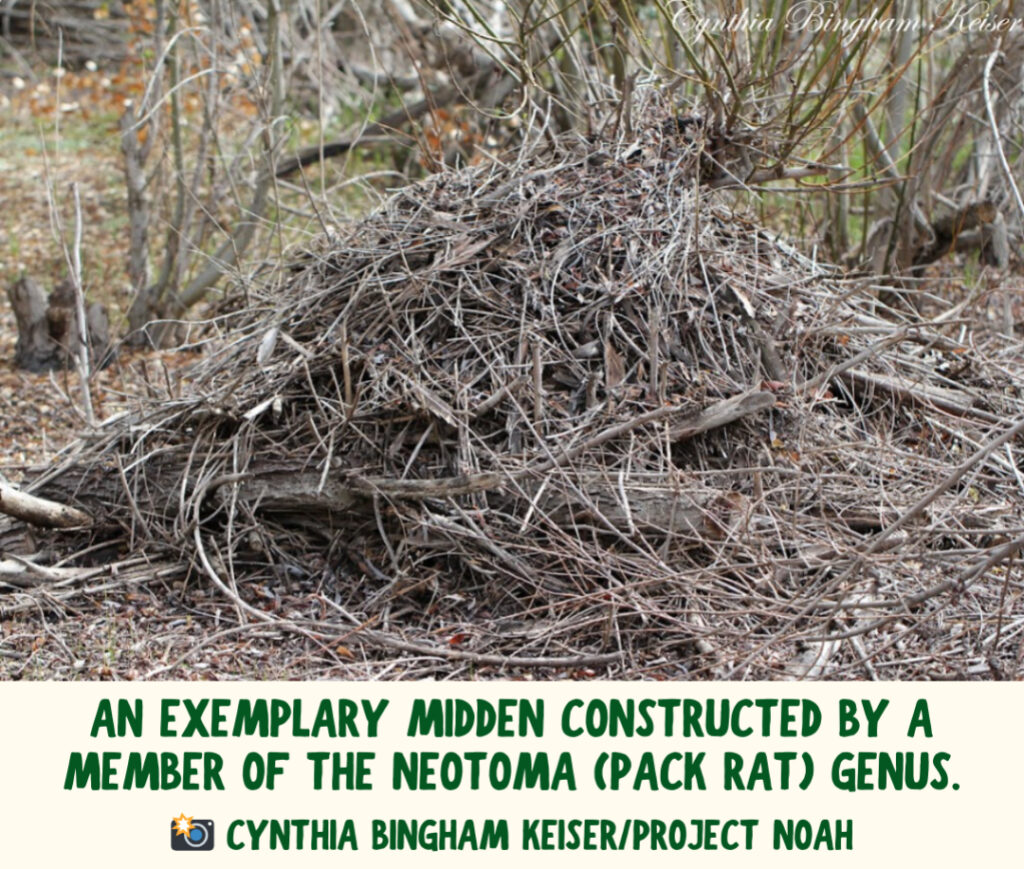
Middens also serve as a nursery when baby season rolls around. Scientists believe woodrats are monogamous for the season, but it’s unclear whether they remain with their mates year-round. We weren’t lying when we said they were elusive! Mating occurs in the spring and summer, and females typically give birth up to three times per year, each litter containing two to three pups on average. Mothers are highly protective and territorial, raising their young alone in and around their nests. The pups grow quickly, though, and are typically independent from mom within just two months from birth. They’ve got trinkets to collect, after all! 🏃
Once those babies “move out,” they’ll need to establish their own territories and get caching! The Allegheny Woodrat’s preferred habitats include rocky outcrops, talus slopes, and forested hilly regions with diverse vegetation. Appalachia is the perfect home! These environments offer a wide array of food options for the largely herbivorous Allegheny Woodrat, who feasts on nuts, leaves, twigs, fruit, seeds, and fungi. They can eat up to 5% of their body weight per day! 🍽️ What they don’t eat will come back to the midden with them and get stored away for winter.
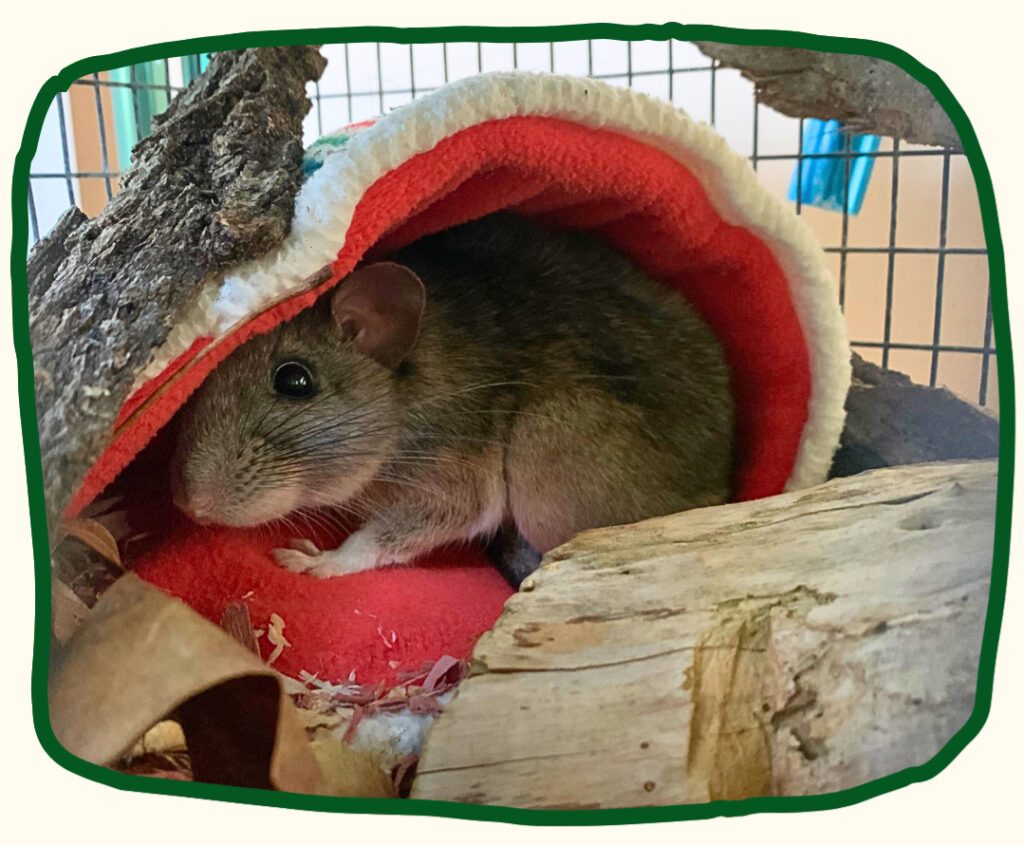
The Allegheny Woodrat: A Conservation Conundrum
Unfortunately, Allegheny Woodrats have been in steep decline. They are listed as a Near Threatened species on the IUCN Red List, a Tier IV Species of Greatest Conservation Need in Virginia, and an endangered species in Indiana, Maryland, North Carolina, New Jersey, and Ohio while threatened in other states still.
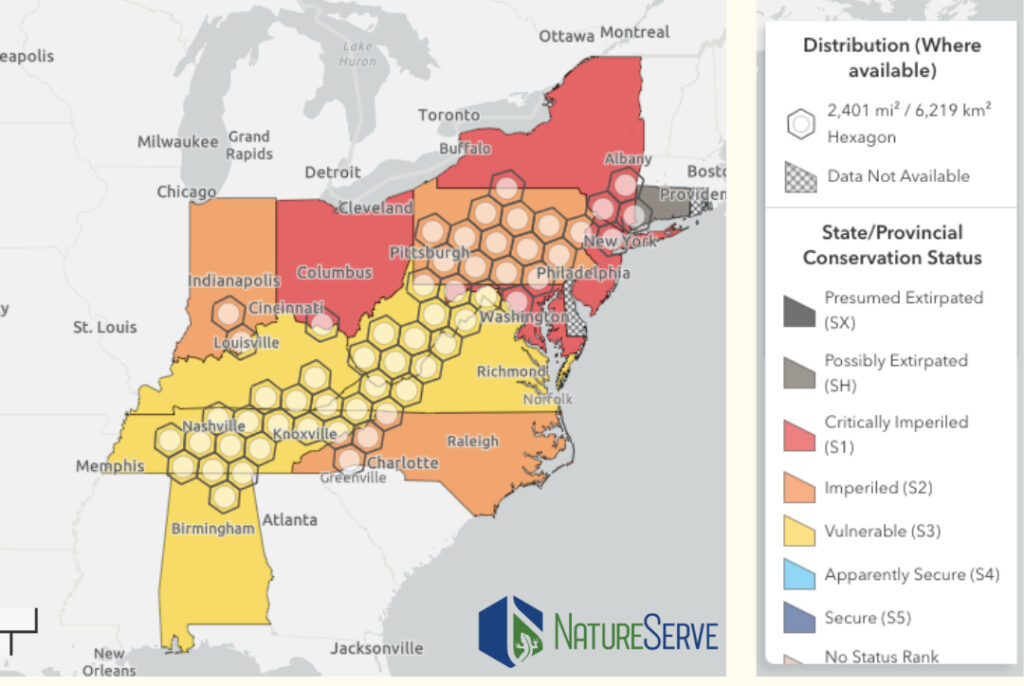
These population declines are due to several interconnected factors, including:
- Loss of major food sources: The American chestnut blight in the early 1900s devastated a huge primary food source for woodrats. 🌰 More recently, oak decline has further reduced the availability of acorns, another critical staple for these rodents.
- Habitat loss & fragmentation: The roads, subdivisions, and infrastructure that carve through forests isolate woodrat populations, making it harder for them to find mates and sustain genetic diversity.
- Raccoon roundworm: Baylisascaris procyonis, a roundworm parasite carried by raccoons, has been particularly harmful to woodrats and persists throughout the environment. Woodrats collect raccoon scat in pursuit of undigested seeds passed through and can accidentally ingest the parasite. Once ingested, the parasite can cause severe neurological damage and death. (Yet another reason why raccoons should only be cared for by licensed professionals like us!) 🦝
- Bad PR: Woodrats are unfortunately mistakenly killed by folks who think they’re an invasive species instead.
Despite their struggles, Allegheny Woodrats remain a vital part of the ecosystem. They help disperse seeds, maintain forest health, and serve as prey for a variety of native predators, including owls, foxes, and bobcats. Additionally, protecting their rocky and forested habitats also benefits other species in decline, such as bats and spotted skunks.
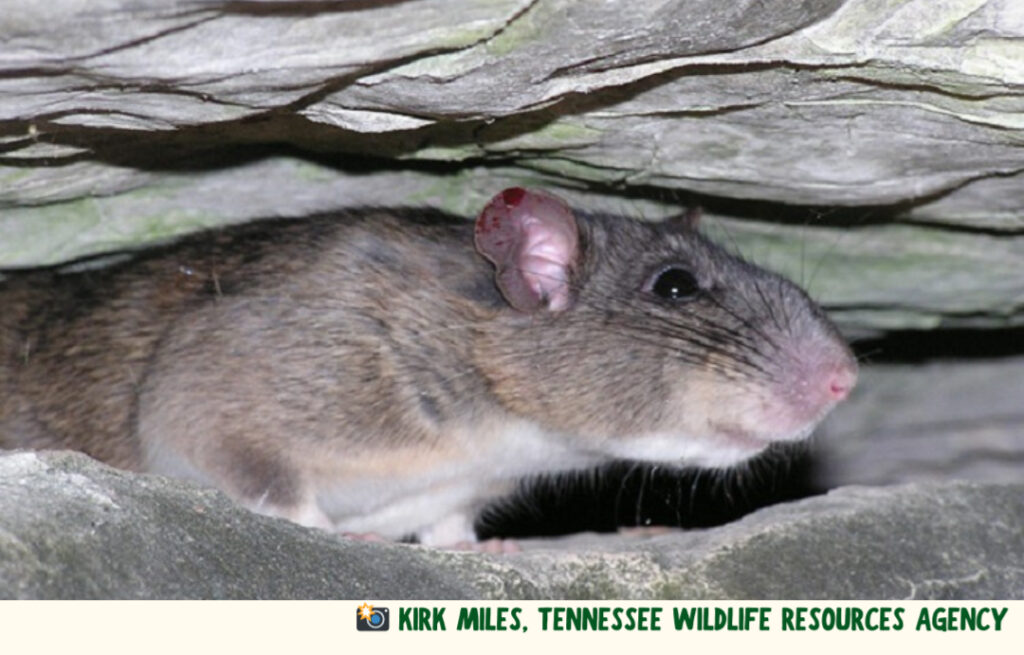
Conservationists and nature-lovers across the Appalachian region can support woodrat populations by:
- Packing out trash and uneaten food scraps after visiting potential Allegheny Woodrat habitats.
- Advocating for forest and rocky landscape preservation, thus improving habitat connectivity, food availability, and ensuring oak trees can grow.
- Creating artificial boulder fields to reconnect fragmented populations.
- Supporting efforts to build wildlife corridors across roads, particularly in rocky, hilly areas where woodrats are most likely to live.
- Incorporating large rock piles into landscape design, especially if you are developing rural land.

Woodrat Repopulation Efforts
If you accidentally trap an Allegheny Woodrat, like RWS patient #25-016’s caller did, you may be able to help with repopulation efforts. 💪 That’s because Virginia is still home to a relatively stable, though declining, population of woodrats—particularly within George Washington and Jefferson National Forests and other protected lands. The Virginia Department of Wildlife Resources has worked with other state agencies to relocate certain individuals into endangered populations across state lines. Doing so brings new genetic diversity into those dwindling communities and helps increase woodrat populations where they’re needed most. Our friends at Wildlife Center of Virginia helped nine woodrats get relocated to new states last year!
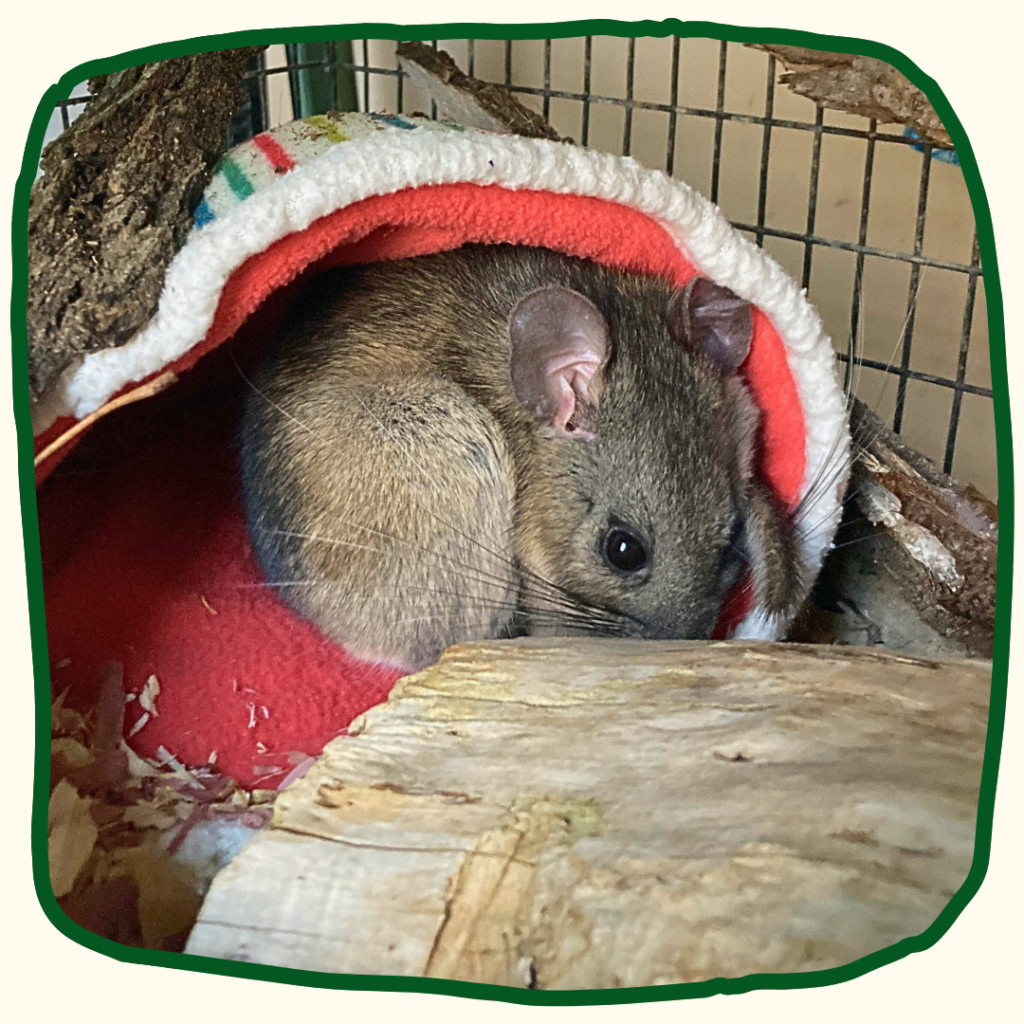
As for Allegheny Woodrat patient #25-016? We considered that relocation could be an option for her, too. However, after our friends at the Wildlife Center of Virginia checked out her missing leg and spoke with the Virginia Department of Wildlife Resources, the consensus was that this particular individual’s best chance at continued survival and reproductive success would be to bring her back to her territory.
We were thrilled to release her on private property within her original home range just a few days later! She scampered off quickly, showing little difficulty given her unique three-legged gait. We hope her future is full of happy woodrat babies and plenty of shiny treasures. ❤️
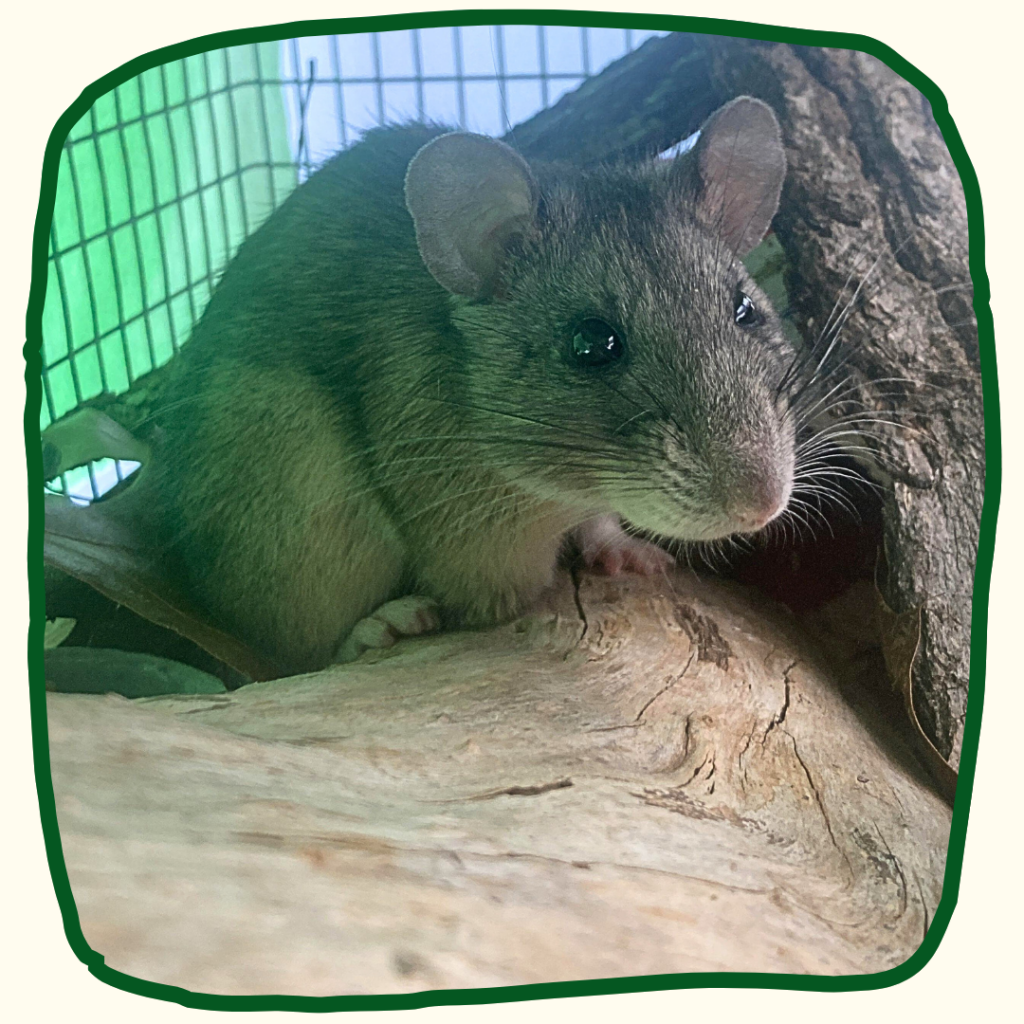
Ultimately, the Allegheny Woodrat is a native species in need of a PR makeover. Unlike the invasive rats that thrive in cities, these woodland dwellers are an irreplaceable part of our natural heritage. By protecting their habitats and spreading awareness, we can help ensure that future generations continue to find these charismatic pack rats scurrying among Virginia’s rocky ridges.
So the next time you hear someone grumble about rats, you can introduce them to a rodent truly worth rooting for! 👏
March 27, 2025
Published:
Be the first to comment!